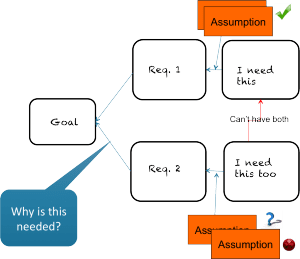“Peace is not the absence of conflict but the presence of creative alternatives for responding to conflict”
– Dorothy Thompson
Several weeks ago I was speaking with a good friend of mine, a psychologist and a school counselor, and we got to talking about conflict. It was an engaging conversation and an insightful aspect of the discussion for me was the importance of making the distinction between a solution and a need. Instead of turning a conflict into a struggle over who gets to do what they want by directing others what to do (giving a solution), it is better to define a conflict by expressing what you need and focus on how these needs can be met (personal need).
I had frankly forgotten about the conversation until I stumbled upon this facilitation technique called CRD (Conflict Resolution Diagram) recently. CRD is a structured approach to investigating a difficult conflict and it dovetails quite nicely with the aforementioned conversation. I’ve laid out the steps below and with the CRD in my hip-pocket, I now have an approach to deal with conflict.
Want to try this technique the next time you’re called upon to help resolve a conflict?
7 Steps to Addressing Conflicts: The CRD Approach
Step 1: Create a blank Conflict Resolution Diagram (CRD)
This is the easy part – simply create 5 boxes connected by arrows
Step 2: Articulate the conflict.
State the problem in one of two forms, both impossible choices between conflicting prerequisites
- DO THIS OR DON’T DO THIS? Can’t have both
OR
- HAVE ‘A’ OR HAVE ‘B’? Can’t have both.
Step 3: Determine goals and requirements
Why do we need those two conflicting things? Because of two requirements. Why do we need those two requirements? Because we need them to reach a common goal.
Step 4: Evaluate the reasoning to ensure clarity
Is each step in the reasoning clear and well-understood by everyone?
Step 5: Develop underlying assumptions
Why do we need this to achieve that?
Step 6: Evaluate assumptions
Which assumptions are valid and which ones are invalid? Which assumptions could be challenged? If there are no valid assumptions behind a step in the reasoning, the reasoning is invalid.
Step 7: Create “injections”
As the author contends, this is the hard part. Generating ideas to invalidate those assumptions that hold us back from creating a mutually acceptable situation, one where we achieve our goal in a way that satisfies everyone involved.

